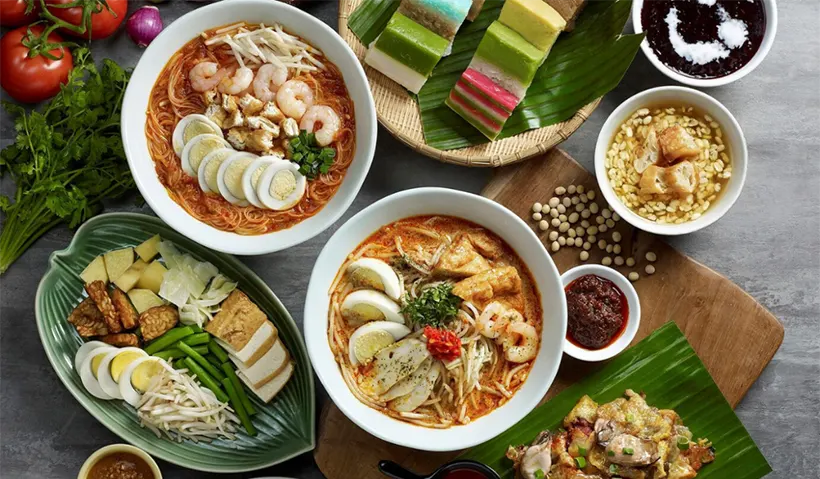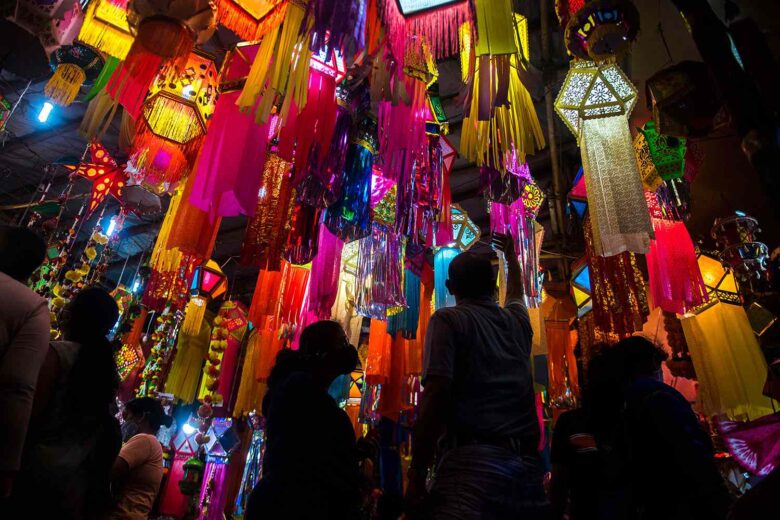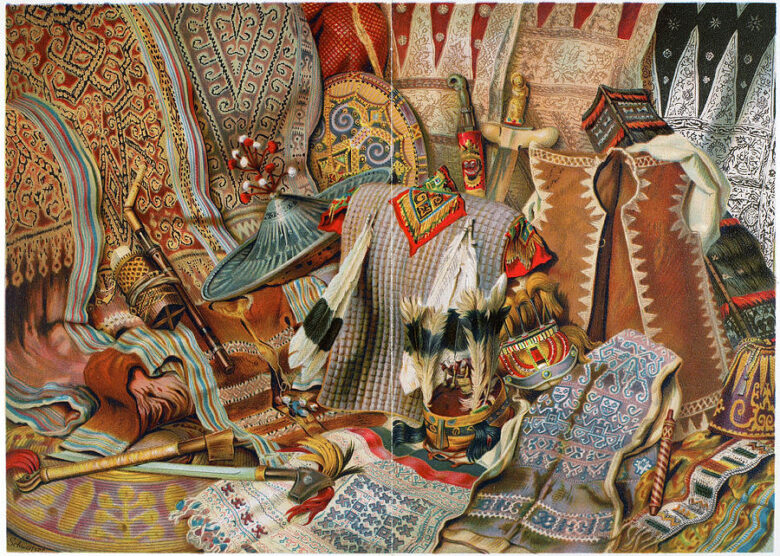In the heart of Southeast Asia, where lush rainforests meet crystal-clear waters and a medley of cultures coalesce, lies the captivating tapestry of Malaysia. A land of contrasts and harmonies, where ancient traditions intermingle with modern aspirations, Malaysia stands as a testament to the enriching beauty of diversity. And at the very core of this nation’s vibrant mosaic lies a unifying force, an elixir that transcends mere sustenance—its extraordinary culinary heritage.
The Malaysian culinary scene isn’t just a collection of dishes; it’s an odyssey that encompasses history, culture, community, and the sheer joy of savouring flavours that have evolved over centuries. From the bustling street markets that come alive with sizzling woks and bubbling pots to the intimate kitchens where family recipes are treasured like heirlooms, the story of Malaysian food is one that resonates with every sense, embracing not only the delightful play of textures and tastes but also the deeply resonant notes of shared stories and cherished memories.
Contents
- 1. Gastronomic Time Travel: Exploring Historical Influences
- 2. Hawker Heritage: A Street Food Odyssey
- 3. The Feast of Festivals: Religion and Celebration
- 4. Fusion or Harmony: Culinary Crossroads
- 5. From Kitchen to Conversation: Culinary Conversations
- 6. Sustainability on the Plate: Nurturing Nature
- Conclusion: Nourishing Togetherness
1. Gastronomic Time Travel: Exploring Historical Influences
To truly understand Malaysia‘s cuisine, one must delve into its past, where centuries of historical interactions have left an indelible mark on the food culture. The spice trade routes connected the East and the West, and the culinary exchange that occurred during this era introduced a plethora of ingredients that are now synonymous with Malaysian dishes. The Portuguese, Dutch, and British colonial influences further enriched the nation’s cuisine. Nasi lemak, a beloved Malaysian dish, is a prime example of this amalgamation. The fragrant rice, infused with coconut milk and pandan leaves, is a fusion of Malay, Chinese, and Indian elements—a testament to the harmonious coexistence of diverse influences.

Source: kkmalaysia.co.nz
2. Hawker Heritage: A Street Food Odyssey
No exploration of Malaysian food culture would be complete without venturing into its vibrant street food scene. The bustling streets of Kuala Lumpur, Penang, and beyond come alive with the sizzling sounds and mouthwatering scents of hawker stalls. Char kway teow, a stir-fried noodle dish, crackles and pops in hot woks, while satay skewers are grilled to perfection. The hawker culture is a true embodiment of Malaysia’s unity in diversity, where people from all walks of life gather around shared tables to savour the nation’s most beloved culinary treasures. In this tapestry of street food, the clinking of spatulas and the laughter of patrons paint a vivid picture of Malaysia’s convivial spirit.
3. The Feast of Festivals: Religion and Celebration
In Malaysia, festivities are inseparable from food, and religious celebrations serve as a poignant reminder of this union. During Eid al-Fitr, after a month of fasting, tables groan under the weight of rendang, a slow-cooked meat dish, and ketupat, a compressed rice cake wrapped in woven palm leaves. Similarly, Diwali, the Festival of Lights, illuminates homes and hearts with an array of sweets like murukku. These feasts are more than just gastronomic indulgences; they are an embodiment of the values that define the nation—sharing, togetherness, and respect for one another’s traditions.

Source: people.com
4. Fusion or Harmony: Culinary Crossroads
The term “fusion” often evokes images of disparate elements awkwardly combined, but in Malaysia, culinary fusion is a work of art. The nation’s multicultural landscape has led to the creation of dishes that seamlessly blend various ingredients and cooking techniques. Take rojak, a medley of fruits and vegetables drizzled with a tangy shrimp paste sauce. In this dish, the diverse elements come together to create a harmonious whole, reflecting the nation’s ethos of unity amid diversity. These dishes are more than just culinary delights; they are living examples of how different cultures can converge to create something distinctly Malaysian.
5. From Kitchen to Conversation: Culinary Conversations
In Malaysia, a meal is never merely a physical act of nourishment—it’s a portal to heartfelt conversations, an exchange of stories, and a communion of souls. The simple act of sharing a plate of nasi campur, a rice dish with an assortment of accompanying dishes, becomes a gateway to tales of childhood, family traditions, and cultural heritage. Recipes passed down through generations are not just culinary instructions; they are vessels of memory, carrying the essence of family stories and cultural roots. These conversations around the dining table enrich the tapestry of Malaysian culture, weaving together past and present, laughter and nostalgia.

Source: fineartamerica.com
6. Sustainability on the Plate: Nurturing Nature
As the world grapples with environmental concerns, Malaysia’s culinary landscape is also evolving to embrace sustainability. The nation’s lush biodiversity, from the mangroves to the rainforests, has birthed ingredients that sustain both body and soul. Farm-to-table initiatives are gaining momentum, reconnecting urban Malaysians with their agricultural heritage. Traditional farming practices are being revived, emphasising the importance of harmony with nature. Malaysians are discovering that preserving their culinary traditions goes hand in hand with preserving the land that nurtures these traditions. In every bite of a sustainably sourced meal, Malaysians are not just nourishing their bodies but also nurturing their connection to the earth.
Conclusion: Nourishing Togetherness
In the heart of Malaysia’s diverse cultures lies a universal language—the language of food. Through its rich history, its vibrant street food culture, its festive feasts, and its culinary conversations, Malaysia’s food not only delights the palate but also reflects the nation’s soul. The fusion of culinary influences, the art of sharing, and the commitment to sustainability all contribute to a narrative of unity, respect, and celebration. As the aromas and flavours continue to evolve, one thing remains constant—the heartwarming and contemplative power of food to bind a nation and celebrate its shared journey. In Malaysia, the dining table isn’t just a place to eat; it’s a space where stories are shared, memories are made, and the profound depth of culture is savoured with every bite.
